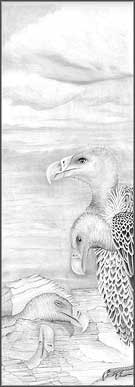|
||||||||||||||||
|
|
||||||||||||||||
|

Humans, Nature and Birds |
From Room 1: From Public to Virtual Venues |
||||
|
|||||
 |
curricula based on those departments. Thus it happens that science is taught in science class, whereas art is taught in art class. Because Science Art is relevant to both, is educationally useful, and offers an important way of drawing people’s attention, it could create a productive zone of overlap between these two disciplines. Students, instructors, and even the public at large could find out about emerging environmental issues, for example, or their resolution, in the zone of overlap. Science Art does not always have a specific agenda, nor should it, but it often provides a medium for environmental education that reaches beyond particular issues (see Plate 65). The wide appeal of Science Art is reminiscent, in some respects, of the large number of nature images produced in the 1600s, when the Golden Age of Dutch art benefited from Dutch dominance in commerce, which fostered the exploration of remote regions--leading in turn to the production of images featuring the natural history and species from these places.[79] |
||||
Plate 64 Vultures and Crystals Oriental White-backed Vultures (Gyps bengalensis), © 2004/2007 Darryl Wheye.Science Art--Birds
|
|||||